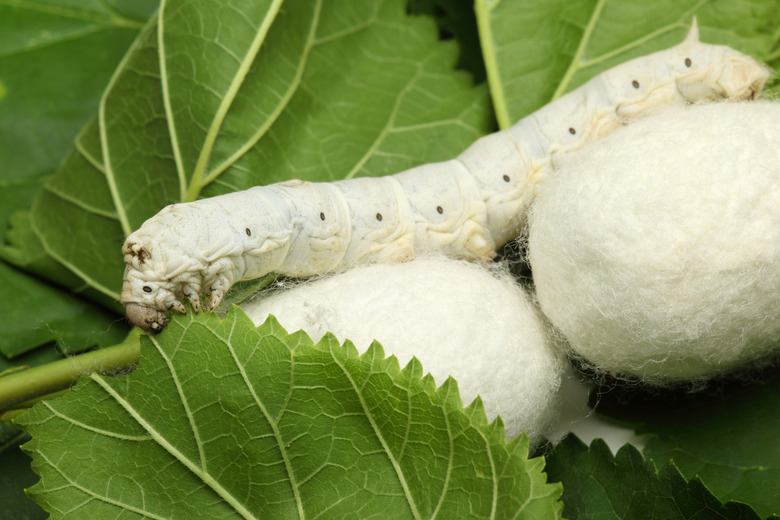Habitat Of Silkworms
Silkworm cultivation began in China over 5,000 years ago. In the 11th century, traders from Europe brought the silkworm's habitat home with them in the form of mulberry tree seeds, as well as silkworm eggs. Today, silk is produced in China, Japan, Italy, France and Spain, though silk has been largely replaced by synthetic fabrics. Making silk fabric from silkworm cocoons takes many cocoons and is very time intensive. This is why pure silk garments are highly prized and relatively expensive.
Unique Habitat
Unique Habitat
The silkworm is a very specialized feeder. It eats only the leaves of mulberry trees. Because the silkworm has become domesticated so that its cocoons can be harvested to make silk fabric, it no longer lives in the wild, but depends on man-made habitats to survive.
Life Stages
Life Stages
After hatching, silkworms go through three life stages—larvae (white worms with large heads), pupae (spun into cocoons), and adult (white with brown spots and four wings). Adult silkworms have lost the ability to fly after centuries of human cultivation. As a result, they are unable to exist in their natural habitat.
Best Mulberry Trees
Best Mulberry Trees
Experts in silkworm cultivation, or sericulture, claim the best silk is produced by silkworms feeding on the leaves of white-fruited or black-fruited mulberry trees. If mulberry leaves are not available, silkworms will thrive on a specially designed artificial feed.
Silkworm Cocoons
Silkworm Cocoons
According to the Center for Insect Science Education at the University of Arizona, one silkworm cocoon is made up of a single strand that is over 900 meters—almost 3,000 feet—long. It takes about 300 cocoons to make one pound of silk. The cocoons are heated in ovens, boiled or dried in the hot sun to kill the worm inside. Then, the cocoons are carefully unraveled and combined with strands from other cocoons to make a single silk thread.
DIY Silkworm Habitat
DIY Silkworm Habitat
Creating a silkworm habitat is as easy as putting mulberry tree leaves in a cardboard shoe box. Keep your silkworms supplied with plenty of fresh mulberry leaves as they eat enough to grow 10,000 times heavier than when they hatched.
References
Cite This Article
MLA
Gutierrez, D.M.. "Habitat Of Silkworms" sciencing.com, https://www.sciencing.com/habitat-silkworms-5780806/. 22 November 2019.
APA
Gutierrez, D.M.. (2019, November 22). Habitat Of Silkworms. sciencing.com. Retrieved from https://www.sciencing.com/habitat-silkworms-5780806/
Chicago
Gutierrez, D.M.. Habitat Of Silkworms last modified March 24, 2022. https://www.sciencing.com/habitat-silkworms-5780806/
